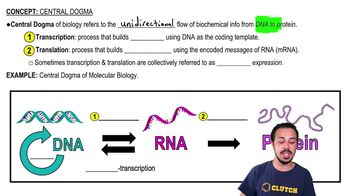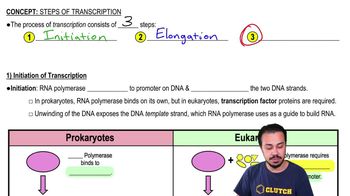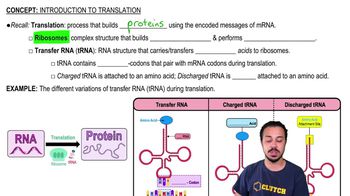On the accompanying figure, label DNA polymerase I, DNA polymerase III, helicase, lagging strand, leading strand, ligase, nucleotide (triphosphate), Okazaki fragment, primase, replication fork, RNA primer, and stabilizing proteins.
<IMAGE>
 Verified step by step guidance
Verified step by step guidance



On the accompanying figure, label DNA polymerase I, DNA polymerase III, helicase, lagging strand, leading strand, ligase, nucleotide (triphosphate), Okazaki fragment, primase, replication fork, RNA primer, and stabilizing proteins.
<IMAGE>
How does the genotype of a bacterium determine its phenotype? Use the terms gene, mRNA, ribosome, and polypeptide in your answer.
The three steps in RNA transcription are __________ , ___________ , and __________ .
____________________ is a recombination event that occurs during gamete formation in eukaryotes.
__________ RNA carries amino acids.
Compare and contrast the processes of transformation, transduction, and conjugation.